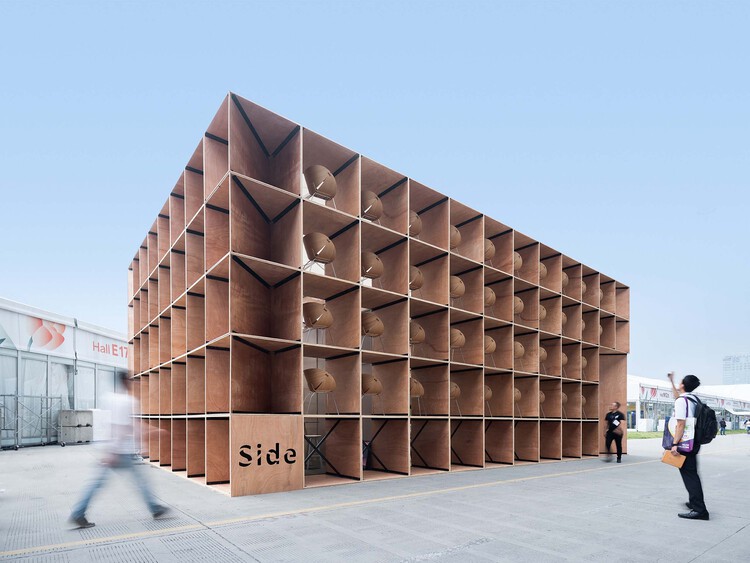Designing temporary pavilions and installations for events, exhibitions, or festivals can pose a significant challenge in achieving a circular economy in architecture, given their transient nature. The very idea of designing a structure that will be used for a limited period of time may seem incompatible with the principles of resource management, waste reduction, and pollution prevention. Nevertheless, there are various approaches to reconsider the way we design temporary structures and promote circularity.
By implementing specific strategies, temporary pavilions and installations can be designed to promote circularity, including repurposing components, redefining their intended use, and relocating them to activate urban life. These approaches offer a more sustainable and responsible approach to event and exhibition design, which benefits both the environment and the economy.
Reusing Materials
Furniture Pavilion S and its Afterlife / Rooi Design and Research
© Feng Shao
An example of successful material reuse is the Furniture Pavilion S designed by Rooi Design and Research. The pavilion consists of 821 standard-sized plywood pieces that can be easily disassembled and repurposed for future projects. After the exhibition, the plywood was transformed into 410 sets of tables and chairs for rural communities. Each piece was crafted into a perfect hexagon table or three rectangle chairs, which can be combined into different forms to increase interactivity and fun.
© Ming Chen
© Rooi Design and Research
© Ming Chen
A New Purpose
Morocco Pavilion Expo 2020 Dubai / OUALALOU+CHOI
© Marc Goodwin
After the conclusion of the 2020 Expo, the temporary pavilion is designed to be converted into a housing complex, repurposing it for a new use rather than dismantling it altogether. Existing facilities are set to be thoughtfully adapted into apartments, an 80 m² swimming pool, a fitness club, and a shared lounge. This approach keeps materials and resources in use for as long as possible, while also reducing waste and the environmental impacts associated with new construction.
© Marc Goodwin
© OUALALOU+CHOI
© Marc Goodwin
Relocating Structures
Upcycling Pavilion Icarus Open Air Museum / Barman Architects
© Fabio Purgino
This project is part of the MePart program, which aims to give new life to temporary installations and structures produced by major cultural events through a network platform to promote the transition towards a circular economy. It generates new urban scenarios through the relocation of the resources of temporary events. This is a powerful way to engage communities and encourage participation in the preservation of the structure, promoting a sense of community ownership and civic pride, and generating sustainable growth dynamics for the territory.
© Fabio Purgino
Courtesy of Barman Architects
© Fabio Purgino
This article is part of the ArchDaily Topics: Circular Economy. Every month we explore a topic in-depth through articles, interviews, news, and architecture projects. We invite you to learn more about our ArchDaily Topics. And, as always, at ArchDaily we welcome the contributions of our readers; if you want to submit an article or project, contact us.
Editor’s Note: This article was originally published on February 17, 2023.

